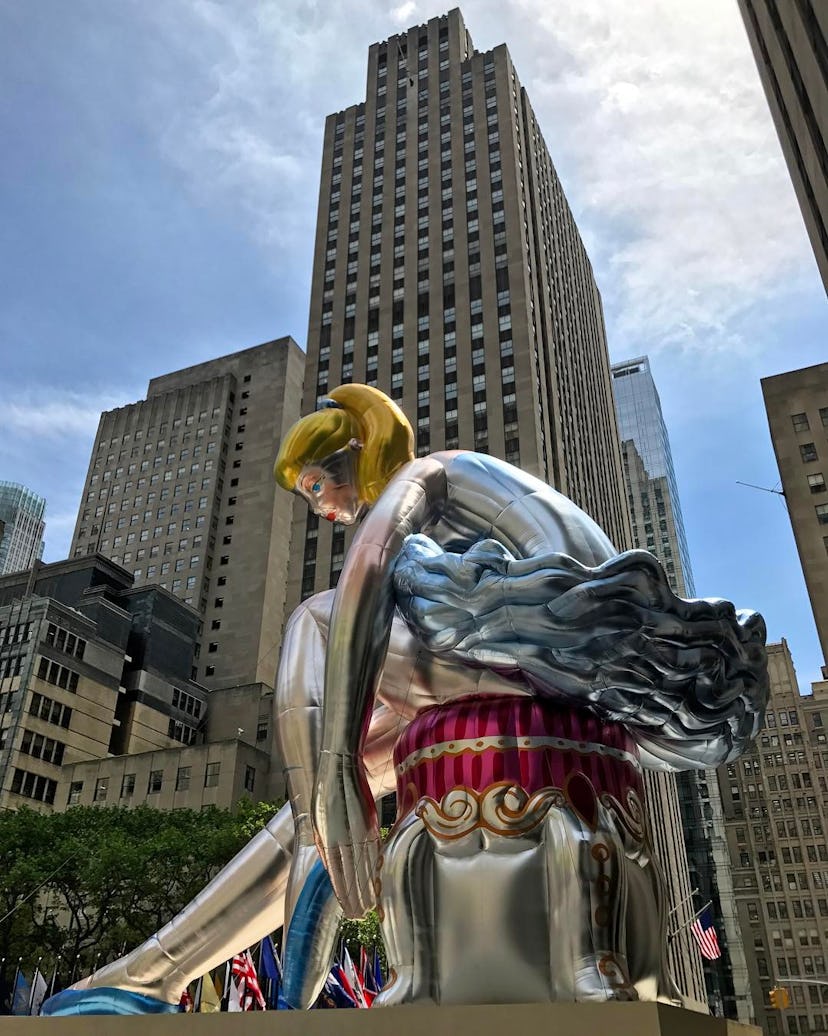Is Instagram-Friendly Contemporary Art Killing the Market For Old Masters?
The market for art made by artists born prior to 1875 is shrinking fast, while buyers tend to prefer more contemporary fare.

Last month an impressive untitled painting by Jean-Michel Basquiat from 1982 sold for $110.5 million at Sotheby’s.
Regardless of the high quality of the work, that’s too much to pay for just about anything (“I decided to go for it,” said the buyer, Japanese fashion billionaire Yusaku Maezawa) and it’s already having an effect on the rest of the art market.
The New York Times reports today that while contemporary art, often made by artists still alive who are able to take advantage of opportunities like collaborate with fashion brands or produce Instagram-friendly tableaus, remains hotter than ever, the market for more traditional art, the kind of things you might see in museums, has dropped off dramatically.
“Last year, postwar and contemporary works by artists born after 1910 generated 52 percent of the value of the world’s fine-art auction sales, their highest share, according to a recent report,” Scott Reyburn writes . “Pieces by artists born before 1875—in other words, all the art of the pre-modern era—accounted for just 25 percent of such auction sales.” And with pieces like the Basquiat hogging headlines, “those market shares are poised to become even more skewed this year.”
(One dealer told me, the night of the Basquiat sale, that “Tonight proves that the Modern art market is the contemporary market. All other markets, Impressionist-Modern, feel like niche markets these days.”)
The story is rife with data and quotes sure to hit any art history major right in the gut. One major piece by French Orientalist painter Jean-Léon Gérôme (1824-1904), “Bathsheba,” sold at Sotheby’s New York for $2.2 million in 1990. On Tuesday it sold to a single bidder at Sotheby’s London for $631,000. To quote art advisor Wendy Goldsmith: “The issue is that this period is just not sexy any more.”
But then again how could it be? In recent years artists in their 20s like Lucien Smith and Oscar Murillo were grabbing headlines for their glamorous parties and skyrocketing prices. All this was part of a semi-manufactured bubble for young art that was very trendy and for some people profitable. In 2013, for example, prices for Murillo increased tenfold.
That’s all largely over, but it drew attention to how cliquey the art world can often be. The global art market does about $50 billion in business each year, which is large but not anything compared to fashion’s $3 trillion, so various artists and sectors have to fight for dollars of a really shockingly small number of serious collectors.
Following the craze for young art, there was a trend of finding an undervalued postwar artist, Kazua Shiraga being a great example, and promoting the heck out of him until the market started to bite. The Basquiat is part of a trend too, of anointing so-called modern masters like Martin Kippenberger at auction, when, though critically acclaimed, their auction market had never really represented their critical value or their value on the private market, where prices are not known.
But none of this is ever going to help the pre-1910 artists. This is due to a number of reasons but the main thing about the art business is that it’s one where you have to create both supply and demand. There’s never going to be fervent buying of this kind of material simply because there isn’t as much out there to sell. And that means it’s never again going to be “hot.”
Which is a shame because this stuff costs the same as a [downmarket](http://garagemag.com/jeff-koons-gazing-ball-paintings/ Which would you rather own? ) Jeff Koons.
Related: All the Art That Would Be Trash at Frieze New York 2017
Chameleons of the Art World: The Humans of Frieze New York: